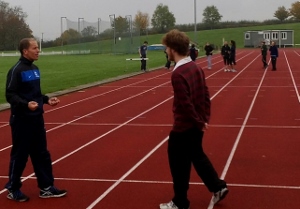Posts Tagged ‘brain circulation’
Grantham Sabre Camp
Sabreurs’ fitness
Last week I had the pleasure of working at James and Ian Williams’ summer sabre camp in Grantham. There were about 30 fencers there, from aspiring juniors to top ranked seniors. My role was to support the coaches by delivering group and individual fitness sessions.
Fitness for fencers: part 4
“Should fencers run to get fit?”
 Is a discussion I have with fencing coaches a lot. Nearly all say “yes”.
Is a discussion I have with fencing coaches a lot. Nearly all say “yes”.
Running is a basic locomotor activity that we have developed as humans over thousands of years.
Read MoreInternational Debuts: Good luck girls
Jenny McGeever and Torzie Boylett overcome hurdles to get honours
One of the best moments in my Coaching career was last week when these two ladies were talking about their selection for Internationals this week.
Both have had to overcome some big hurdles and I am chuffed to bits for them and their families.
Read MoreFencing Camp
Just came back from working on a 2 day fencing camp in Grantham with various fencers. Two of the girls I train were on the camp, so it was good to see them in action. (Jenny McGeever is pictured).
The camp has been run in the past by Army personnel, and the two PTIs from Headley Court did an excellent job on the camp. Something you can rely on is professionalism and enthusiasm as well as being able to walk the walk.
Read More